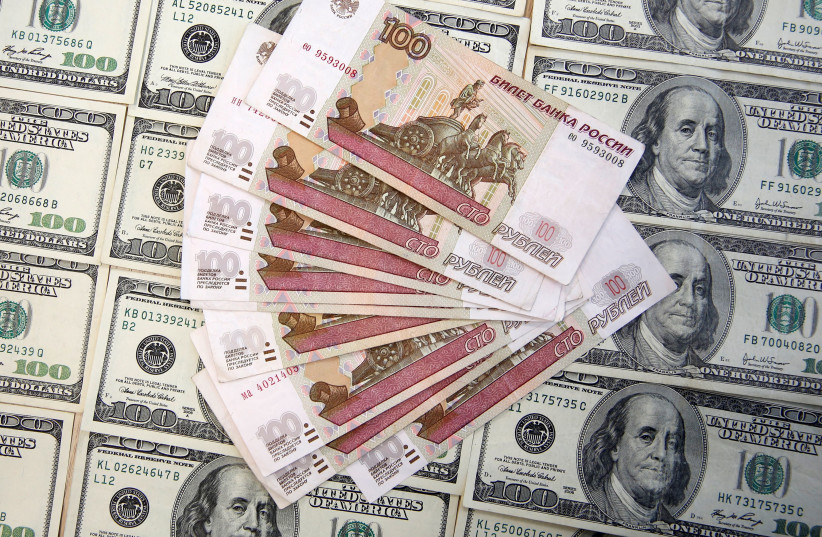Iranian media reported that Moscow expressed readiness to invest in Iran’s steel, oil and petrochemical industries.

Russian and Iranian officials are working to weaken the US dollar, discussing their shared interests in a meeting in Tehran on Sunday.
Russian Presidential Aide Igor Levitin, who is currently on a two-day trip in Tehran, met with the secretary of Iran’s Supreme National Council Ali Shamkani, and the two discussed ways to thwart Western sanctions.
During the meeting, Shamkhani expressed his satisfaction with the volume of economic cooperation between Russia and Iran, praising “the path that started to reduce the influence of the dollar in regional and international economic exchanges.”
These plans, he said, “will limit the dominance of the West over the world economy to the minimum.”
The representatives also discussed the ongoing joint project, the North-South Transport Corridor, which Shamkhani described as having a “decisive role in changing the geometry of goods transit in the region.”
The North-South Transport Corridor (NSC) is a transport network for moving freights between Iran, Russia, Azerbaijan and other countries in Asia and Europe.

The transport corridor aims to create new networks to avoid the US and the West as sanctions grow on Iran. Iran has supplied Russia with drones for Russia’s war in Ukraine, and Iran wants more Russian support for its defense industry.
Levitin, for his part, expressed Moscow’s readiness to invest in Iran’s steel, oil and petrochemical industries.
Russia’s economic position
Despite Russian efforts to weaken the US dollar, the currency has continued to gain this week, while the Russian rouble is having the worst week of the year so far.
The Russian rouble suffered its worst week against the dollar this year, tumbling on a lack of foreign currency in Moscow and on the sale of Western businesses in Russia, despite gaining slightly on Friday afternoon as traders locked in profits.
The rouble RUBUTSTN=MCX skidded more than 2% against the US dollar on Friday to an intraday low of 83.50, its weakest since April last year, and fell more than 2% against the euro to an intraday low of 91.32 against EURRUBTN=MCX.
The rouble had nosedived to 113 per dollar after President Vladimir Putin ordered the invasion of Ukraine in February 2022, but the central bank and finance ministry helped stabilize the currency, and it strengthened to 50 per dollar in July.
The West then imposed a price cap on Russian oil – the lifeblood of the Russian economy – late last year, since which the rouble has weakened from about 60 per dollar to more than 80 this week.
Traders said the Russian currency has come under pressure recently from a cocktail of problems including the sale of Western assets to domestic investors, which stoked demand for dollars, while lower oil prices in March cut the country’s export revenue.
The rouble is the third-worst performer among global currencies so far this year, behind only the Egyptian pound and the Argentine peso, Reuters calculations show.
“The Russian currency remains in fundamentally weak conditions,” said Vladimir Evstifeev, head of analysis at Bank Zenik. He said exporters were reluctant to swap their export revenues for roubles in the expectation that the dollar would strengthen while importers were buying foreign currency in the expectation of a bounce back in consumer confidence.
“The rate of weakening of the Russian currency is increasing, so it is likely that the authorities will get involved in the situation on the foreign exchange market and conduct a series of verbal interventions in support of the rouble.”
Seth Frantzman contributed to this report.
Content retrieved from: https://www.jpost.com/international/article-738794.